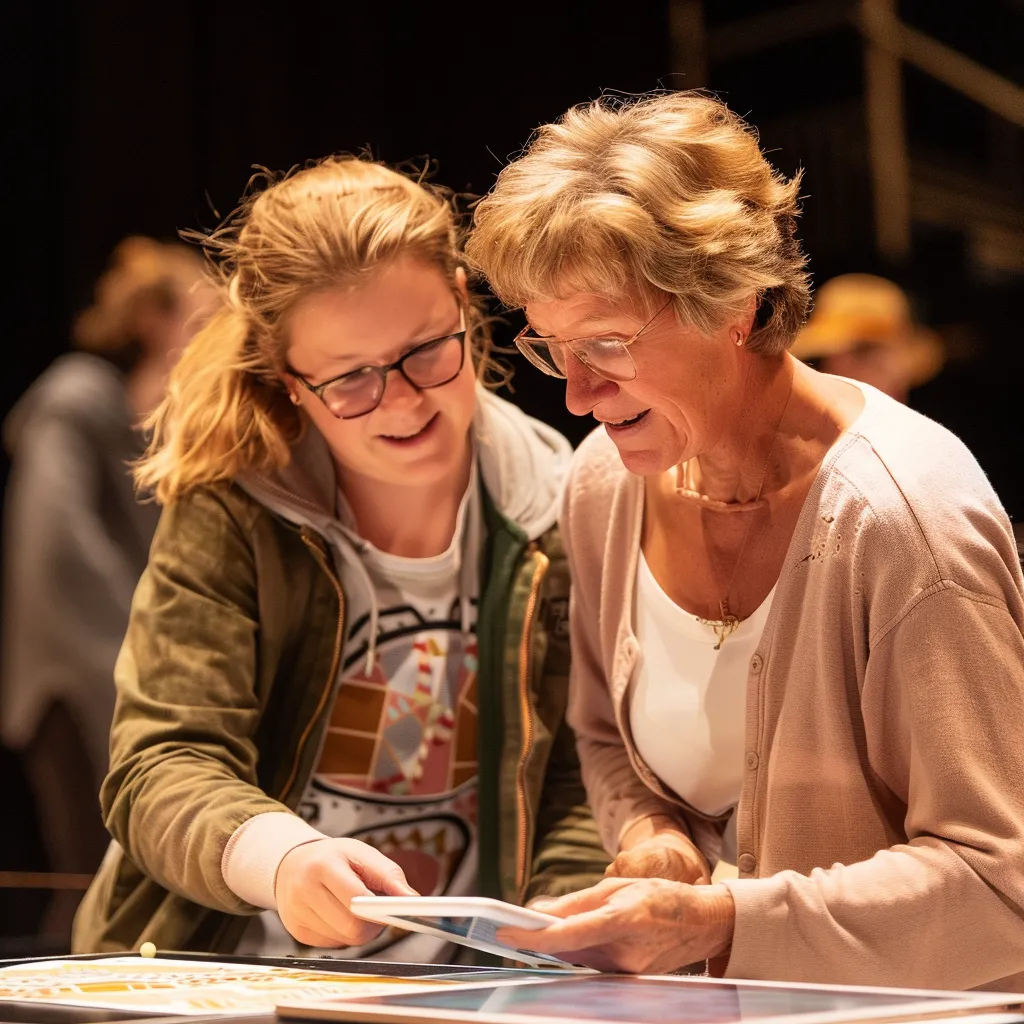
Building Stronger Arts Communities: Collaboration Over Competition
Building Stronger Arts Communities: Collaboration Over Competition
There has been a lot of discussion in our department lately about overlapping productions. Earlier this school year, we attended a workshop focused on getting students involved at the college level and creating a seamless pathway for young artists within our district. The presenter emphasized the importance of coordinating within our schools and with local arts groups to avoid excessive competition for audiences.
Since then, many of us—teachers, performers, and arts administrators—have been discussing this issue. Many make the argument that we should limit our offerings, so we are not competing for the top talent. My thought is that we shouldn’t limit the number of opportunities available just to avoid competition. Instead, we should be working to include as many students as possible, which will, in turn, grows our audiences over time.
The Challenge of Overlapping Productions
This conversation came up again recently while working on a production. Another school in our district was performing a show at the same time as ours, and they were using our shared sound engineer. He has been working in the district for a long time and is the most familiar with our equipment, but since their show opens a week before ours, he has been occupied with their production. As a result, our team has been struggling with sound issues—missing key equipment we didn’t even realize we needed, as that’s usually something he handles.
Some people in our community have suggested that the solution is to have fewer shows. A parent in the band program, who frequently navigates scheduling conflicts, raised this point. But I truly believe that this is the wrong approach. We don’t need fewer artistic activities—we need more. And we need to be better about reaching out to students and bringing them into these opportunities. Bringing more students into programs with meaningful opportunities means we would never be competing for performers, we would be overflowing with young artists ready to shine.
The real challenge is: How do we do that? How can we build stronger arts communities, foster collaboration, and grow participation across all performing arts—whether it’s theater, music, dance, or choral performances?
The Key to Growth: Building Trust and Engagement
To expand participation in the arts, we need to cultivate trust within our communities. People need to know who we are, believe in our mission, and see the value in what we create. What we offer needs to be worth attending, supporting, and—if applicable—paying for.
A great example of this is a local dance company I work with. Every performance they put on fills the house. Why? Because they have a strong community of invested parents who bring friends, family, and other supporters. Their productions feature students at all skill levels, not just the most advanced dancers, and they ensure that every child feels valued. That sense of inclusion builds momentum, encouraging more participation and broader community support. Visit our blog post on Fundraising and Community to read more about this topic.
The Power of Storytelling in Theater
In theater, we need to be intentional about telling stories that resonate with our communities. Many programs gravitate toward big, well-known musicals—Disney adaptations, for instance—because students are familiar with them. That’s great, but we also have to ensure that these productions connect to our identity as a school or arts organization.
Just because a school is nearby doesn’t mean the community automatically feels connected to it. We need to actively create that connection through outreach, collaboration, and storytelling. When we do, our students gain more than just performance experience—they build networks, establish relationships, and create future opportunities. A supportive arts community becomes a launching pad for their careers and personal growth.
Three Practical Ways to Strengthen Arts Participation
If we want to move away from a scarcity mindset—where groups compete for the same small audience—and shift toward an abundance mindset—where everyone benefits from a thriving arts culture—here are three ways to start that journey:
Collaborate on Projects with Other Arts Groups
Schools, community theaters, and arts organizations should seek opportunities to work together on productions, workshops, or joint performances. Cross-program collaborations allow students to learn from different mentors, expand their networks, and reach wider audiences. Instead of focusing on scheduling conflicts, we should be fostering partnerships that enrich artistic experiences for everyone.Engage the Community with Purposeful Outreach
Don’t wait for people to show up—invite them in. Offer open rehearsals, community workshops, or behind-the-scenes experiences. Partner with local businesses or cultural organizations to create cross-promotional opportunities that bring in new audiences.Create a Culture of Support, Not Competition
Encourage families, students, and educators to attend and support other arts events, even if they’re outside their immediate program. A strong arts ecosystem benefits everyone, and success in one area leads to success across the board.
By focusing on inclusion, outreach, and collaboration, we can ensure that arts education and performance opportunities continue to thrive—not just for today’s students, but for future generations as well. Let’s work together to grow something bigger than any one program or production.
If you're passionate about strengthening arts education and building a thriving creative community, we’d love to connect with you! Join the Backstage AIC community, where theater educators, volunteers, and supporters come together to share ideas, resources, and inspiration. Find us on Facebook and Instagram and be part of the movement!